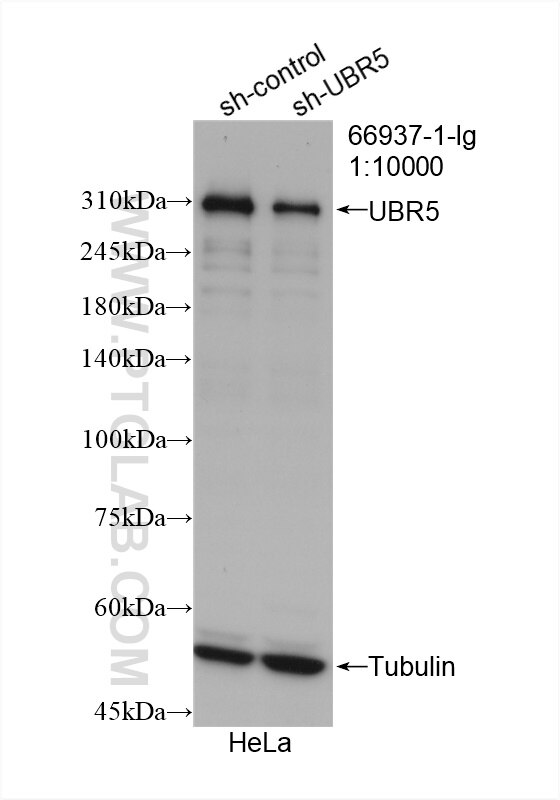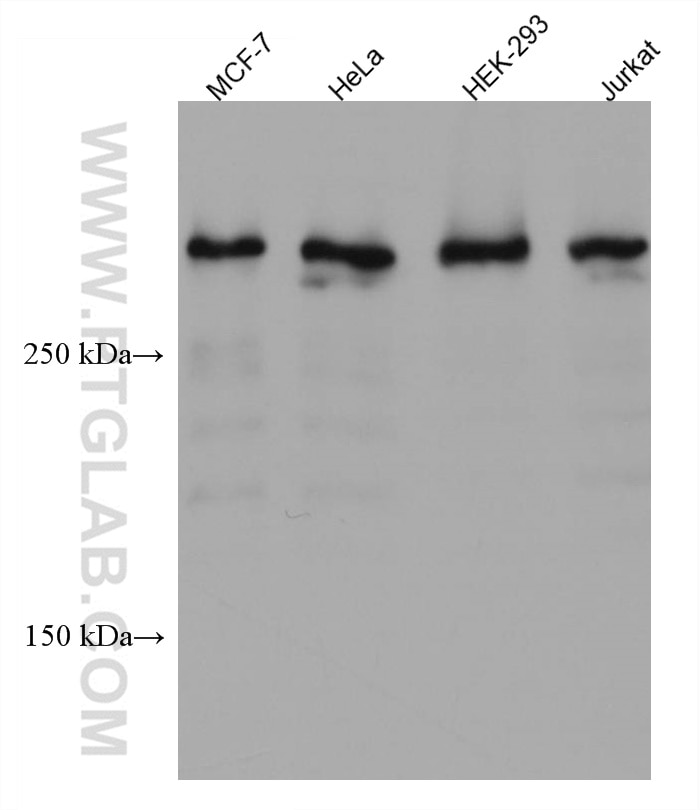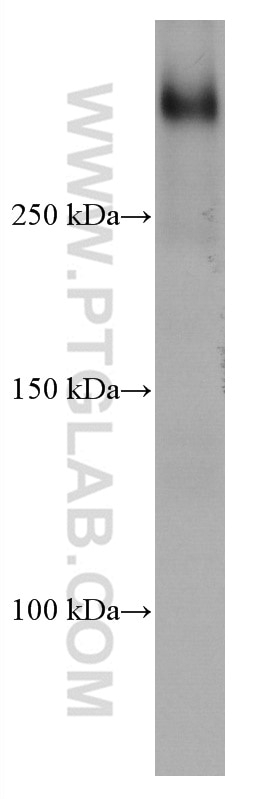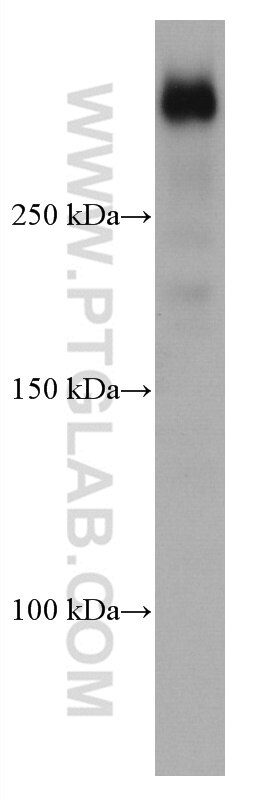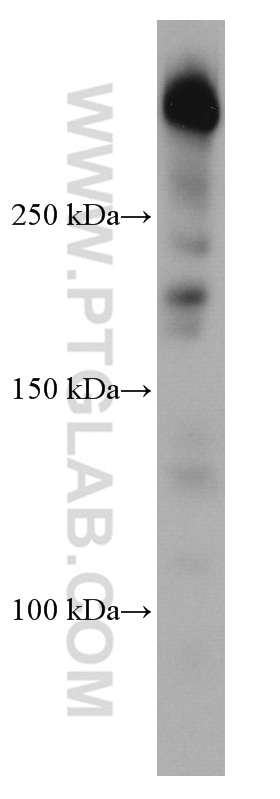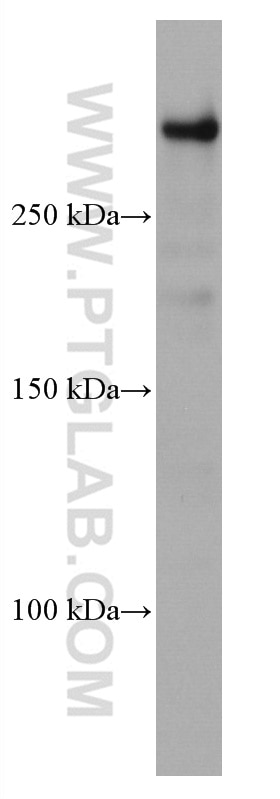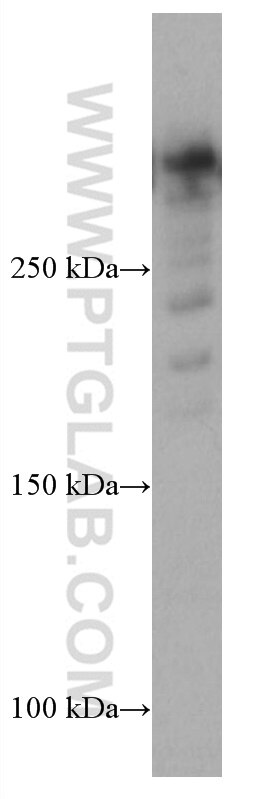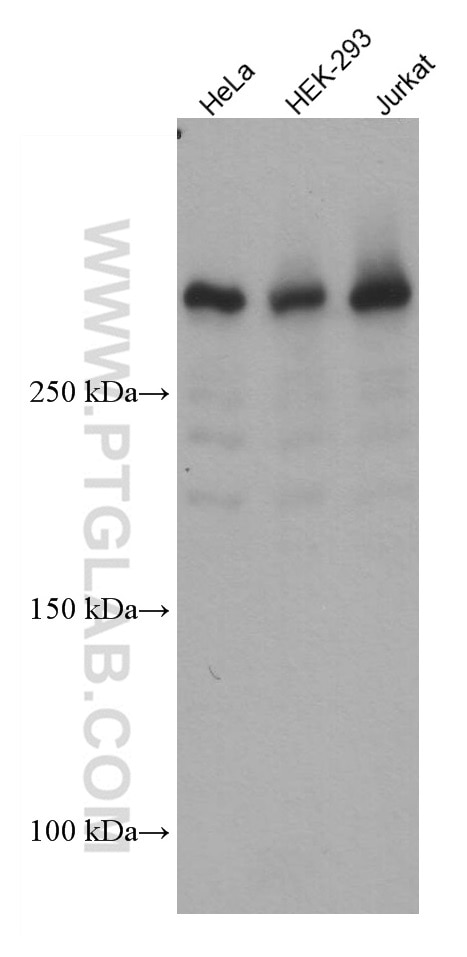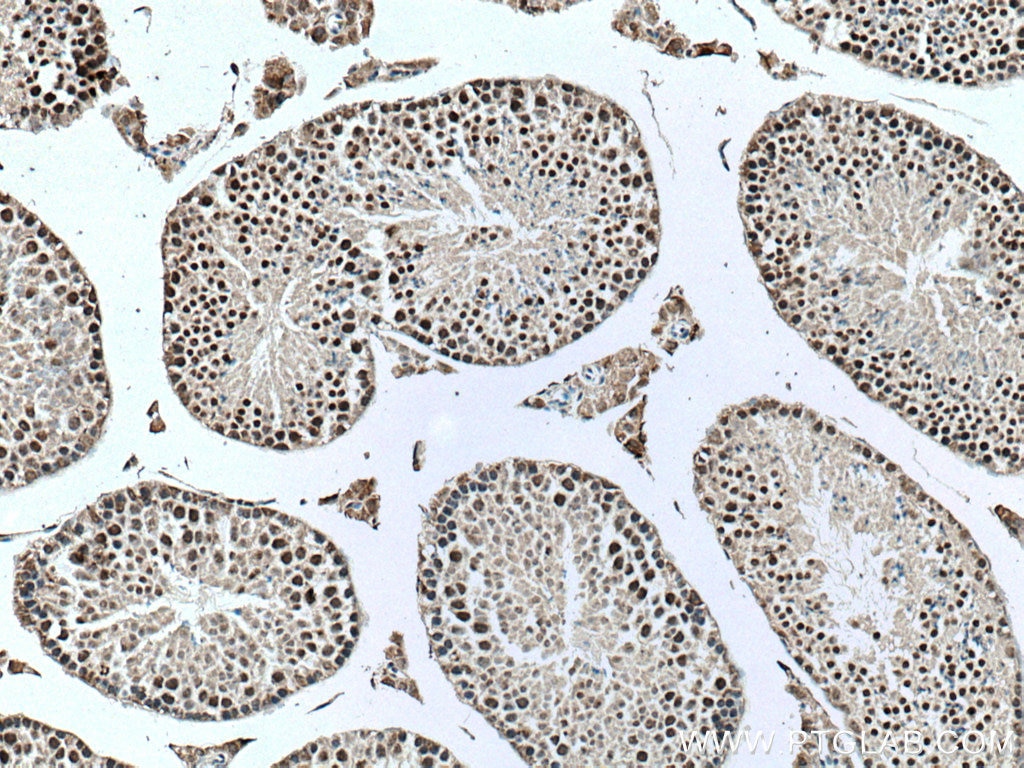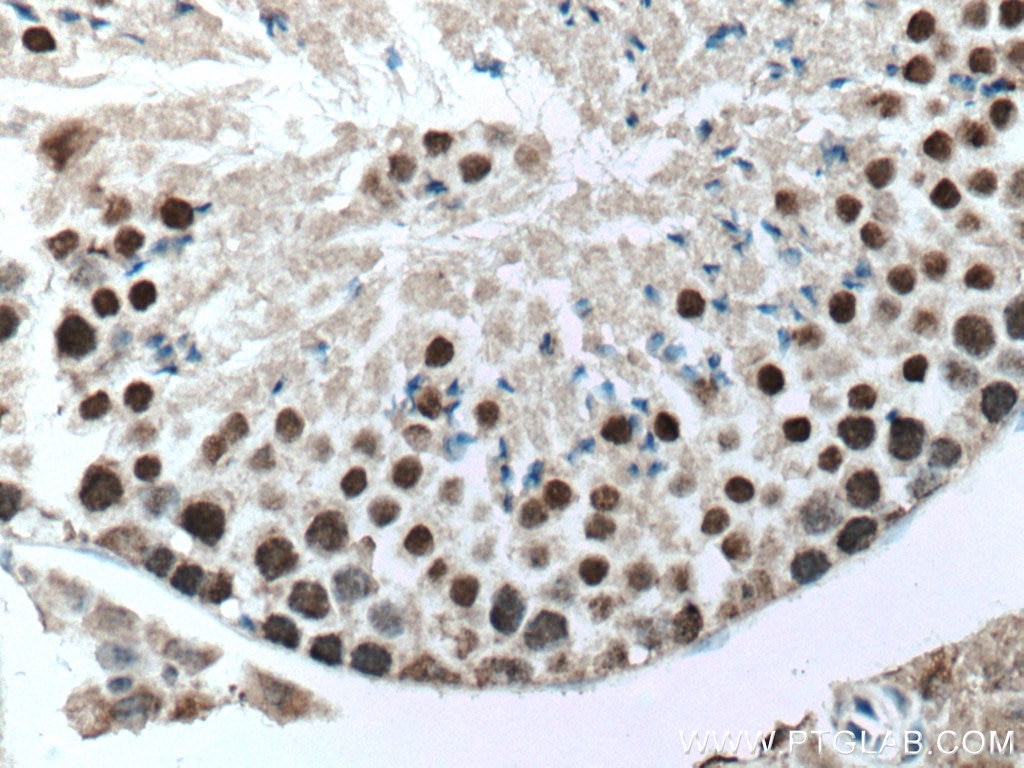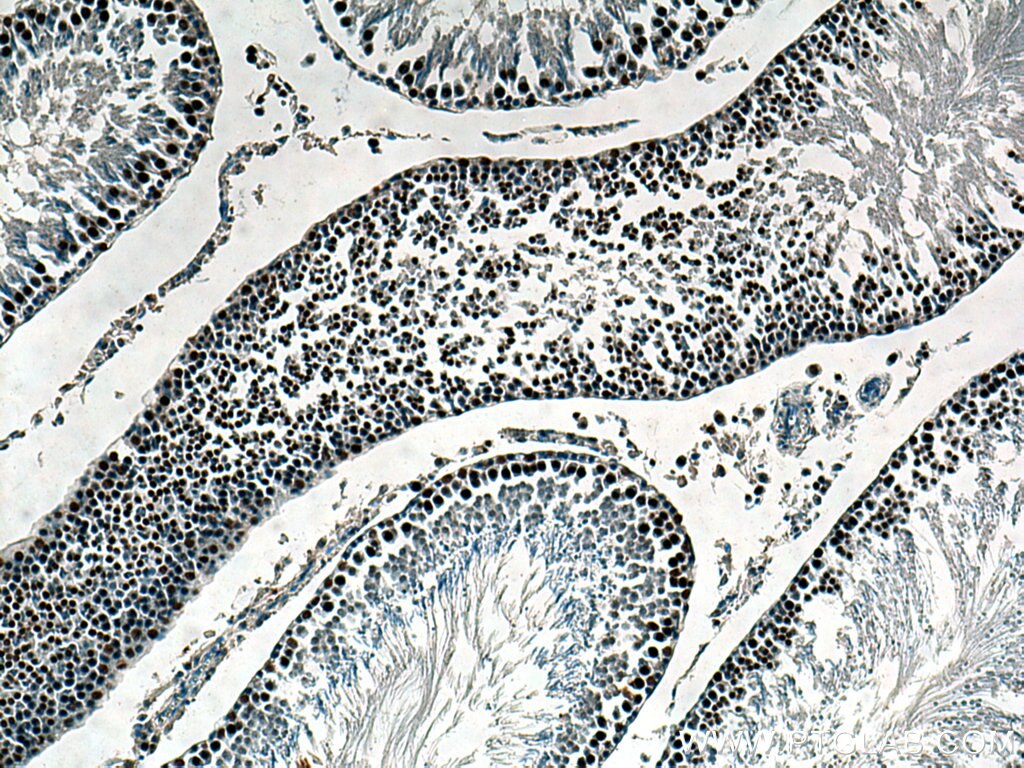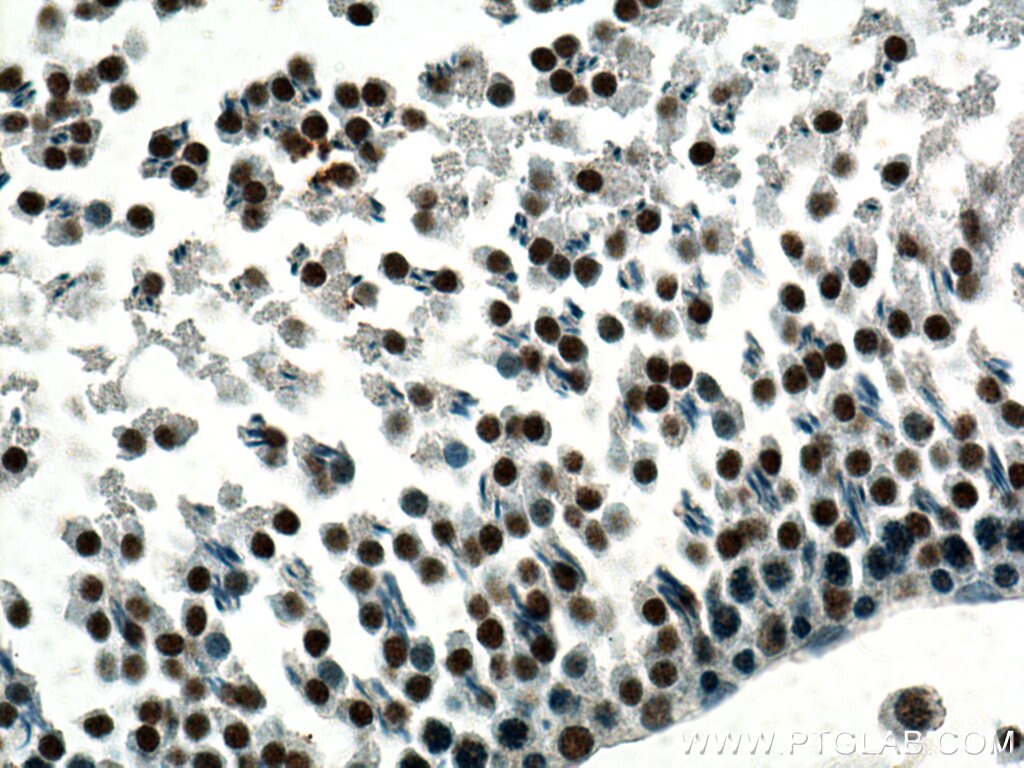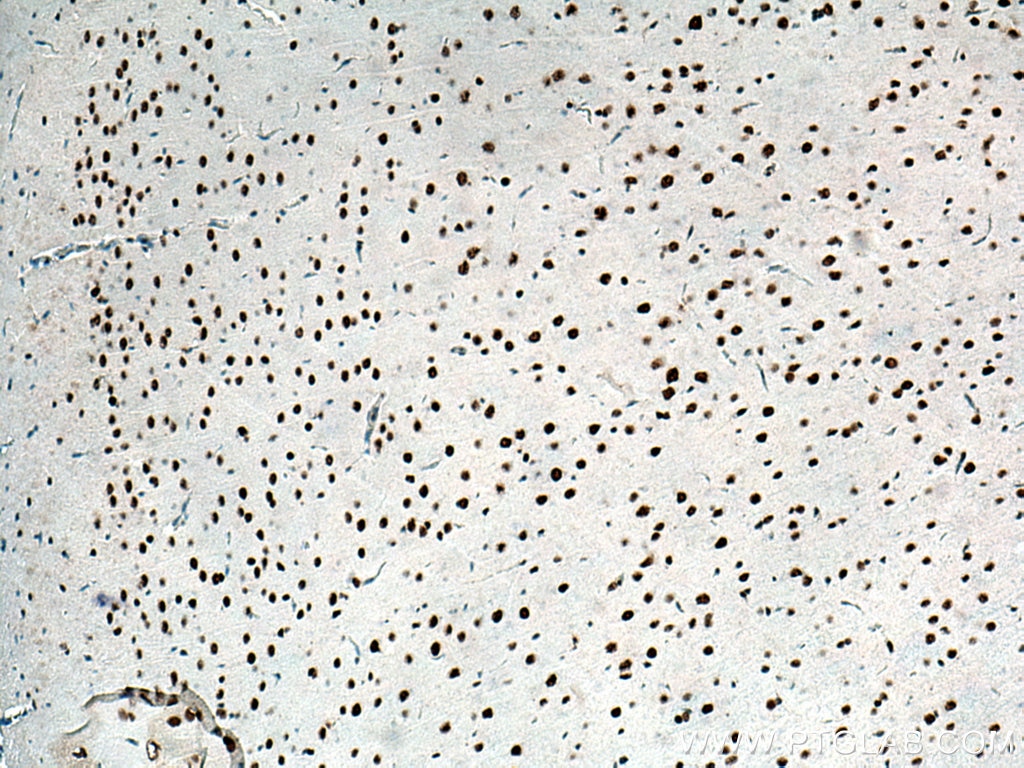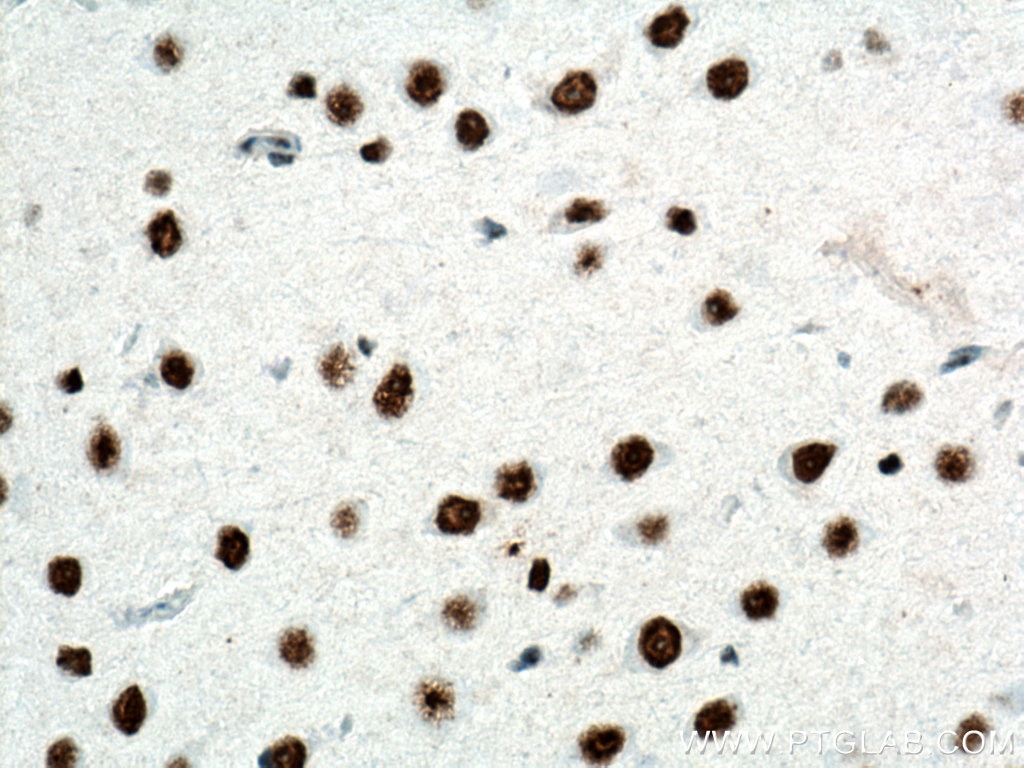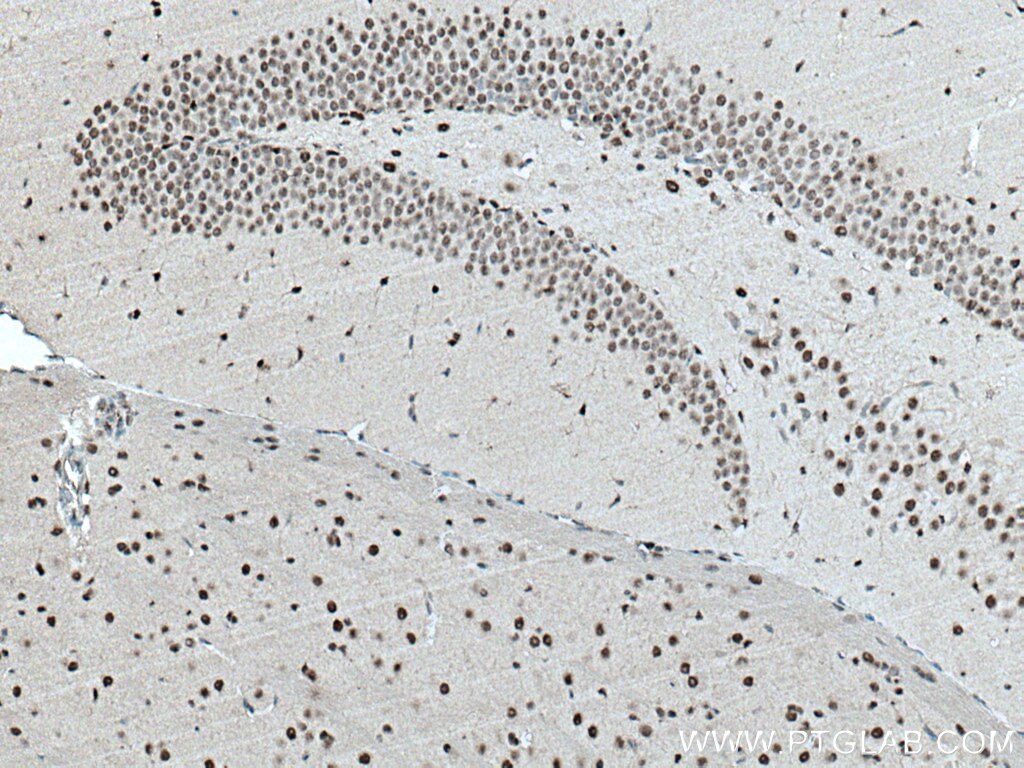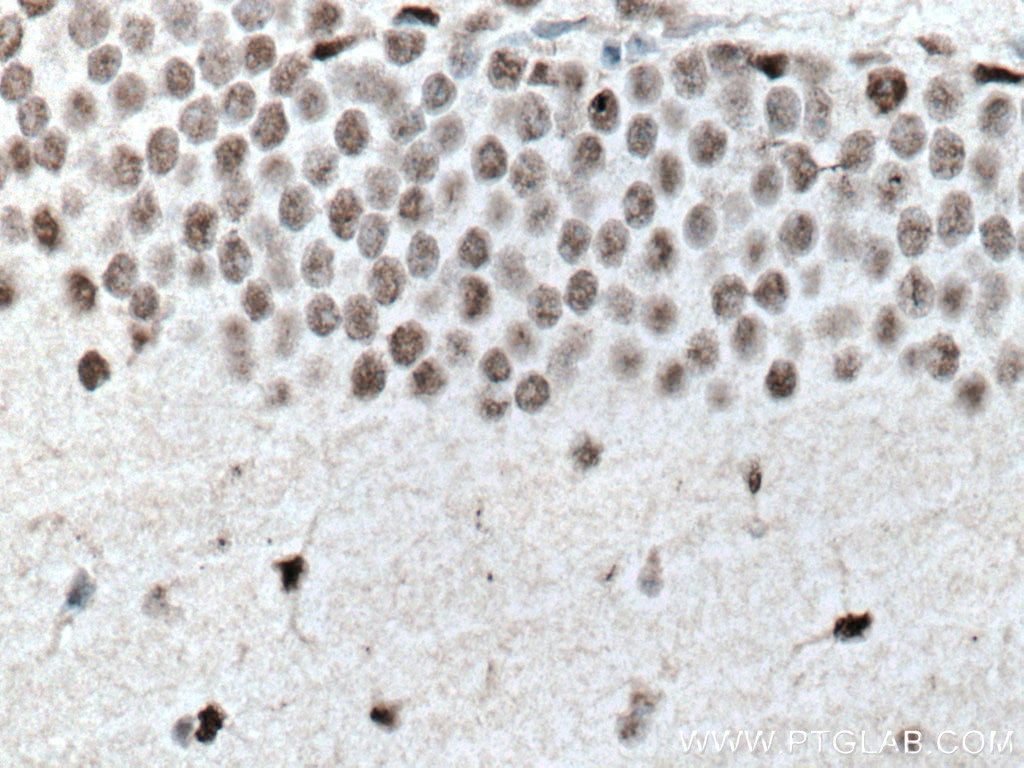- Featured Product
- KD/KO Validated
UBR5 Monoklonaler Antikörper
UBR5 Monoklonal Antikörper für WB, IHC, ELISA
Wirt / Isotyp
Maus / IgG1
Getestete Reaktivität
human, Maus, Ratte
Anwendung
WB, IHC, IF, CoIP, ELISA
Konjugation
Unkonjugiert
CloneNo.
2E7A6
Kat-Nr. : 66937-1-Ig
Synonyme
Geprüfte Anwendungen
| Erfolgreiche Detektion in WB | MCF-7-Zellen, HEK-293-Zellen, HeLa-Zellen, Jurkat-Zellen, Neuro-2a-Zellen, PC-12-Zellen |
| Erfolgreiche Detektion in IHC | Maushodengewebe, Maushirngewebe, Rattenhirngewebe, Rattenhodengewebe Hinweis: Antigendemaskierung mit TE-Puffer pH 9,0 empfohlen. (*) Wahlweise kann die Antigendemaskierung auch mit Citratpuffer pH 6,0 erfolgen. |
Empfohlene Verdünnung
| Anwendung | Verdünnung |
|---|---|
| Western Blot (WB) | WB : 1:5000-1:50000 |
| Immunhistochemie (IHC) | IHC : 1:500-1:2000 |
| It is recommended that this reagent should be titrated in each testing system to obtain optimal results. | |
| Sample-dependent, check data in validation data gallery | |
Veröffentlichte Anwendungen
| KD/KO | See 5 publications below |
| WB | See 7 publications below |
| IHC | See 1 publications below |
| IF | See 2 publications below |
| CoIP | See 1 publications below |
Produktinformation
66937-1-Ig bindet in WB, IHC, IF, CoIP, ELISA UBR5 und zeigt Reaktivität mit human, Maus, Ratten
| Getestete Reaktivität | human, Maus, Ratte |
| In Publikationen genannte Reaktivität | human, Maus |
| Wirt / Isotyp | Maus / IgG1 |
| Klonalität | Monoklonal |
| Typ | Antikörper |
| Immunogen | UBR5 fusion protein Ag18753 |
| Vollständiger Name | ubiquitin protein ligase E3 component n-recognin 5 |
| Berechnetes Molekulargewicht | 2799 aa, 309 kDa |
| Beobachtetes Molekulargewicht | 309 kDa |
| GenBank-Zugangsnummer | BC137234 |
| Gene symbol | UBR5 |
| Gene ID (NCBI) | 51366 |
| Konjugation | Unkonjugiert |
| Form | Liquid |
| Reinigungsmethode | Protein-G-Reinigung |
| Lagerungspuffer | PBS with 0.02% sodium azide and 50% glycerol |
| Lagerungsbedingungen | Bei -20°C lagern. Nach dem Versand ein Jahr lang stabil Aliquotieren ist bei -20oC Lagerung nicht notwendig. 20ul Größen enthalten 0,1% BSA. |
Hintergrundinformationen
UBR5, also named as ubiquitin protein ligase E3 component n-reconin5, is a HECT domain-containing protein as a myocardin-binding protein. UBR5 is highly conserved in metazoans, has unique structural features, and has been implicated in regulation of DNA damage response, metabolism, transcription, and apoptosis. Hence, UBR5 is a key regulator of cell signaling relevant to broad areas of cancer biology (PMID: 26464214). The human UBR5 gene has 59 exons, encoding an approximately 10kb mRNA and >300 kDa protein with widespread expression in various cell types.
Protokolle
| PRODUKTSPEZIFISCHE PROTOKOLLE | |
|---|---|
| WB protocol for UBR5 antibody 66937-1-Ig | Protokoll herunterladen |
| IHC protocol for UBR5 antibody 66937-1-Ig | Protokoll herunterladenl |
| STANDARD-PROTOKOLLE | |
|---|---|
| Klicken Sie hier, um unsere Standardprotokolle anzuzeigen |
Publikationen
| Species | Application | Title |
|---|---|---|
Nat Commun Analysis of Zika virus capsid-Aedes aegypti mosquito interactome reveals pro-viral host factors critical for establishing infection.
| ||
J Virol Multiple E3 ligases act as antiviral factors against SARS-CoV-2 via inducing the ubiquitination and degradation of ORF9b
| ||
Exp Eye Res Retinitis pigmentosa 2 pathogenic mutants degrade through BAG6/HUWE1 complex.
| ||
Cell Death Dis CSN6 promotes melanoma proliferation and metastasis by controlling the UBR5-mediated ubiquitination and degradation of CDK9.
| ||
Adv Sci (Weinh) Phosphorylated SHMT2 Regulates Oncogenesis Through m6 A Modification in Lung Adenocarcinoma | ||
J Agric Food Chem Methionine and Leucine Promote mTOR Gene Transcription and Milk Synthesis in Mammary Epithelial Cells through the eEF1Bα-UBR5-ARID1A Signaling
|
